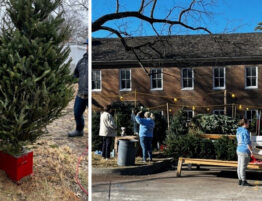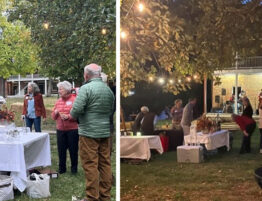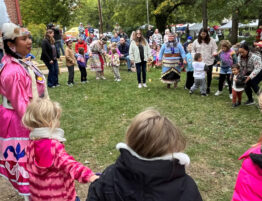
This is an excerpt from the report written by Reverend Thomas Johnson to Major Cummins. It is an excerpt and gives a brief snapshot about the plans for what is now the Shawnee Indian Mission property.
August 1839?
Experience and observation during the past year strengthen us in the belief that our plan for a central manual labor school is the best that can be adopted to meet the wants of the Indians in this part of the country. They are scattered over a large portion of the country, a few hundred only in a tribe in many cases, and each tribe speaking its own dialect; and if a teacher should go and settle down among them, he will only succeed in collecting a small number around him a few hours in the day; the principal part of their time would be spent among their own people, and of course they will speak and understand the language of the people with whom they associate, and no other. It is true, they may be greatly improved in agriculture, religion, etc., by having suitable persons to live among them, who are willing to labor for the good of the Indians; but they never can be advanced in education so as to become English scholars. Now we think that a central manual labor school will go very far to remove the difficulties alluded to. Here the children from the different tribes will be taken to one place, and put under the care of competent teachers, with a suitable number of white children mixed in with them, and all required to speak the English language; which they will be inclined to do, for as they come from different tribes, they cannot understand one another in any other way; consequently, when they have learned to read our books, they will understand what they read, and profit thereby; and as we will have them under our care all the time, we can give them a physical education as well as mental, by having suitable men connected with the institution to learn them the more useful branches of mechanism, agriculture, etc. But we do not intend to convey the idea that we think a school of a higher order is necessary for the Indians, or that they need a classical education at present. We only mean to concentrate our efforts at one point, that we may make them more efficient, so that we may be able to give the Indians an education suited to their wants in the cheapest way, and not spend our time, and money too, by following the old plan which avails so little. But while we make our central school our chief dependence for education, we do not expect to slaken our efforts to instruct the Indians in their different tribes; for we expect to continue our regular missionaries in the different tribes, who, in addition to the religious instruction of the Indians, will be expected to instruct them in agriculture, to select children and send them to the central school, to exercise a kind of guardianship over the children who may be educated at the central school when they return home, by aiding them in settling themselves and commencing business, and, when it is necessary, they can teach a school; though I presume this will only be done as preparatory to the central school.
We expect to be able to commence our central school in about two months. We have teachers engaged; but as the spring and summer were very wet, and the clay not or good quality, our brick work has been protracted beyond our former calculations, so that we shall only have buildings to accommodate 60 or 70 children this fall; but our present plan of buildings when completed will be sufficient for 150 children or more, with the necessary teachers. We have the principal part of the materials for the whole of the buildings collected at the place, and hope to have them completed in the course of the next summer.
We have laid off a farm of 500 acres, and have the whole of it ploughed up, and 400 acres fenced. We have raised this year 1,500 or 1,800 bushels of oats, and have 175 acres in corn, which we think is good for 5,000 bushels. We have sowed 100 acres in wheat, and 100 acres in timothy, and planted an orchard of 10 acres.
[Report of Commissioner of Indian Affairs, 1835-1839, pp. 433, 434.]





